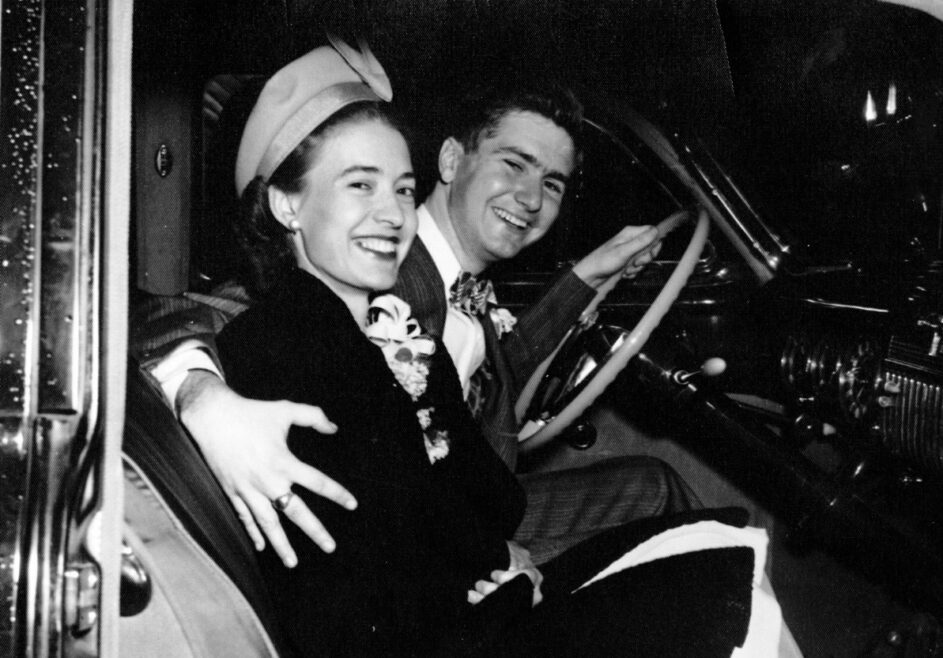Homer B. Clonts joined the Navy in 1943 and served from 1943 to 1945. He was on three ships as a Navy signalman, serving longest on the staff of Adm. Richmond K. Turner, who was then commander of the Amphibious Forces of the Pacific.
Clonts participated in the invasions of the Marshall Islands, Guam, Iwo Jima and Okinawa, and, finally, in the liberation of the Philippines. His aptitude for writing a vivid description of an event is reflected in a large volume of stories he wrote during his Navy career, many in graphic detail, especially those about Kamikaze attacks. Some were written on the back of a large map and would be published much later, in April 1985, in a story he wrote for the 40th anniversary of the invasion of Okinawa.

Homer Clonts, U.S. Navy (1943-45). Clonts served in many South Pacific naval battles and wrote graphic accounts of them, especially the Kamikaze attacks.
Clonts was born on Feb. 18, 1924, in Bluffton, Alabama., the son of Presley R. (1884-1952) and Martha Donaldson Clonts (1888-1966). The family moved to Menlo, Georgia, where Homer graduated from the local high school in 1941 as valedictorian of his class.
He went to work for Combustion Engineering Co. in Chattanooga for a time, but he resigned to join the Navy. He was honorably discharged in 1946 and entered the University of Tennessee intending first to become an engineer. He soon found physics and calculus not to his liking and entered the school of journalism. He wrote for the Orange and White, the student newspaper, and also worked for the UT public relations office.
Before his graduation, he took a job as editor of the Carthage (Tenn.) Courier, a small paper where he received valuable experience reporting, editing and acting as his own photographer.
On Feb. 7, 1948, Homer Clonts and Ada Bowers (1922-2013) were married. Theirs was a close partnership. Early in their marriage, when a local train-truck collision killed 10 people, he pressed his new wife into action as the photographer while he gathered the facts and wrote the story.
In 1949, Homer Clonts joined the staff of the Knoxville News Sentinel as a reporter. His story of the segregation crisis in Clinton in 1956 represents some of his best reporting. When John Kasper incited a mob, there were several reporters shoved around and more than once their lives were threatened. Clonts started his story with these words:
CLINTON – A mob of about 1,500 persons, whipped white-hot by a fiery segregationist imported from Alabama (originally from Greenwich Village and Washington, D.C), made law and order a mockery in East Tennessee last night.
When they started to ease off, a mob of teenagers fresh from a victorious football game came in, revitalized the riot and kept it going until early morning.
Police, deputies and highway patrol officers just let it happen. Passively. Except once, when the mob turned toward the home of Mayor W.E. Lewallen, and the officers turned the mob back. …
Many will remember Clonts for the column he wrote each Sunday. His boss, city editor Joe Levitt, had a very direct style and, as Clonts remembered the conversation, it started (and ended) something like this, “You start writing the garden column next week.” So began a 25-year series of articles.
He didn’t consider himself much of a gardener at first but he came up with a story every week even through the winter months when it was not easy to find something to write about. In very early spring, his annual alert would appear announcing the frost-free date:
According to recent UT research, there is a 25 percent chance that the last occurrence of a 32-degree or lower temperature will be on or after April 10 in Knoxville. At a 50 percent level of probability, the last occurrence of 32-degrees or lower temperature is expected to be on or after April 2. These probabilities are based on 30 years of continuous records ending in 1970.
While he was on the education beat in 1959, Clonts wrote an innovative series of articles describing his “enrolling” and attending class in successive levels of grade school beginning with first grade. The articles attracted national attention and won him an award from the Education Writers Association.
In 1964, he was promoted to assistant city editor and then became city editor in 1970, succeeding long-time Grammar Gremlin writer Don Ferguson, who became chief clerk for the U.S. District Court. In 1977, he became the editorial page editor. Even after the promotions he continued to write the garden column, eventually accumulating 25 years at the task. Upon his retirement in 1989, he continued to write a column on his reminiscences.
Gardening became his hobby too over the years but it did not replace his interest in woodworking, photography, coin collecting and reading. And, he once won a blue ribbon at the Tennessee Valley Fair for a rug he had made.
A faithful member of Central Baptist Church of Fountain City, Homer B. Clonts passed away after a brief illness on Oct. 13, 1999, at 75 years of age. He was survived by his wife of 51 years and two daughters, Elaine C. Russell and Janice C. Farrington. After services at Rose Mortuary, he was buried in Lynnhurst Cemetery. Fourteen years later, on May 3, 2013, Ada B. Clonts passed away at 90 years of age. She was buried beside her husband in the family burial plot.
Jim Tumblin, retired optometrist and active historian, writes a monthly series on Fountain City for KnoxTNToday.com.

